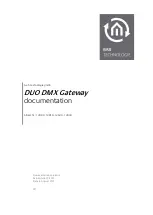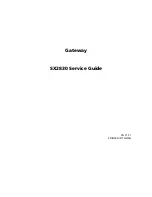
6 Configuring system backups
Backing up the management console configuration
The management console configuration is automatically backed up whenever the cluster
configuration changes. The backup takes place on the node hosting the active management console
(or on the Management Server, if a dedicated management console is configured).
The backup file is stored at
<ibrixhome>/tmp/fmbackup.zip
on the machine where it was
created.
In an agile configuration, the active management console notifies the passive management console
when a new backup file is available. The passive management console then copies the file to
<ibrixhome>/tmp/fmbackup.zip
on the node on which it is hosted. If a management console
is in maintenance mode, it will also be notified when a new backup file is created, and will retrieve
it from the active management console.
You can create an additional copy of the backup file at any time. Run the following command,
which creates a
fmbackup.zip
file in the
$IBRIXHOME/log
directory:
$IBRIXHOME/bin/db_backup.sh
Once each day, a
cron
job rotates the
$IBRIXHOME/log
directory into the
$IBRIXHOME/log/
daily
subdirectory. The
cron
job also creates a new backup of the management console
configuration in both
$IBRIXHOME/tmp
and
$IBRIXHOME/log
.
If you need to force a backup, use the following command:
<installdirectory>/bin/ibrix_fm -B
IMPORTANT:
You will need the backup file to recover from server failures or to undo unwanted
configuration changes. Whenever the cluster configuration changes, be sure to save a copy of
fmbackup.zip
in a safe, remote location such as a node on another cluster.
Using NDMP backup applications
The NDMP backup feature can be used to back up and recover entire X9000 Software file systems
or portions of a file system. You can use any supported NDMP backup application to perform the
backup and recovery operations. (In NDMP terminology, the backup application is referred to as
a Data Management Application, or DMA.) The DMA is run on a management station separate
from the cluster and communicates with the cluster's file serving nodes over a configurable socket
port.
The NDMP backup feature supports the following:
•
NDMP protocol versions 3 and 4
•
Two-way NDMP operations
•
Three-way NDMP operations between two X9300/X9320/X9720 systems
Each file serving node functions as an NDMP Server and runs the NDMP Server daemon (ndmpd)
process. When you start a backup or restore operation on the DMA, you can specify the node
and tape device to be used for the operation.
Following are considerations for configuring and using the NDMP feature:
•
When configuring your system for NDMP operations, attach your tape devices to a SAN and
then verify that the file serving nodes to be used for backup/restore operations can see the
appropriate devices.
•
When performing backup operations, take hardware snapshots of your file systems and then
back up the snapshots.
40
Configuring system backups
















































